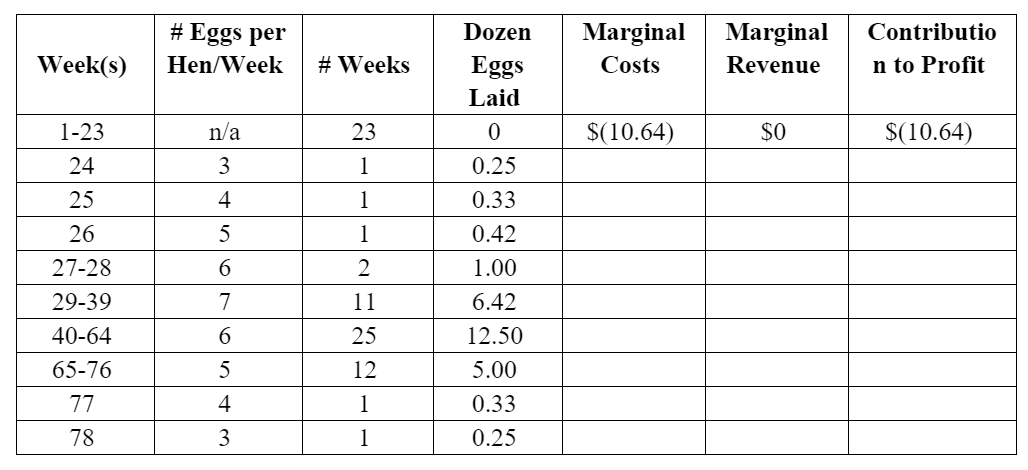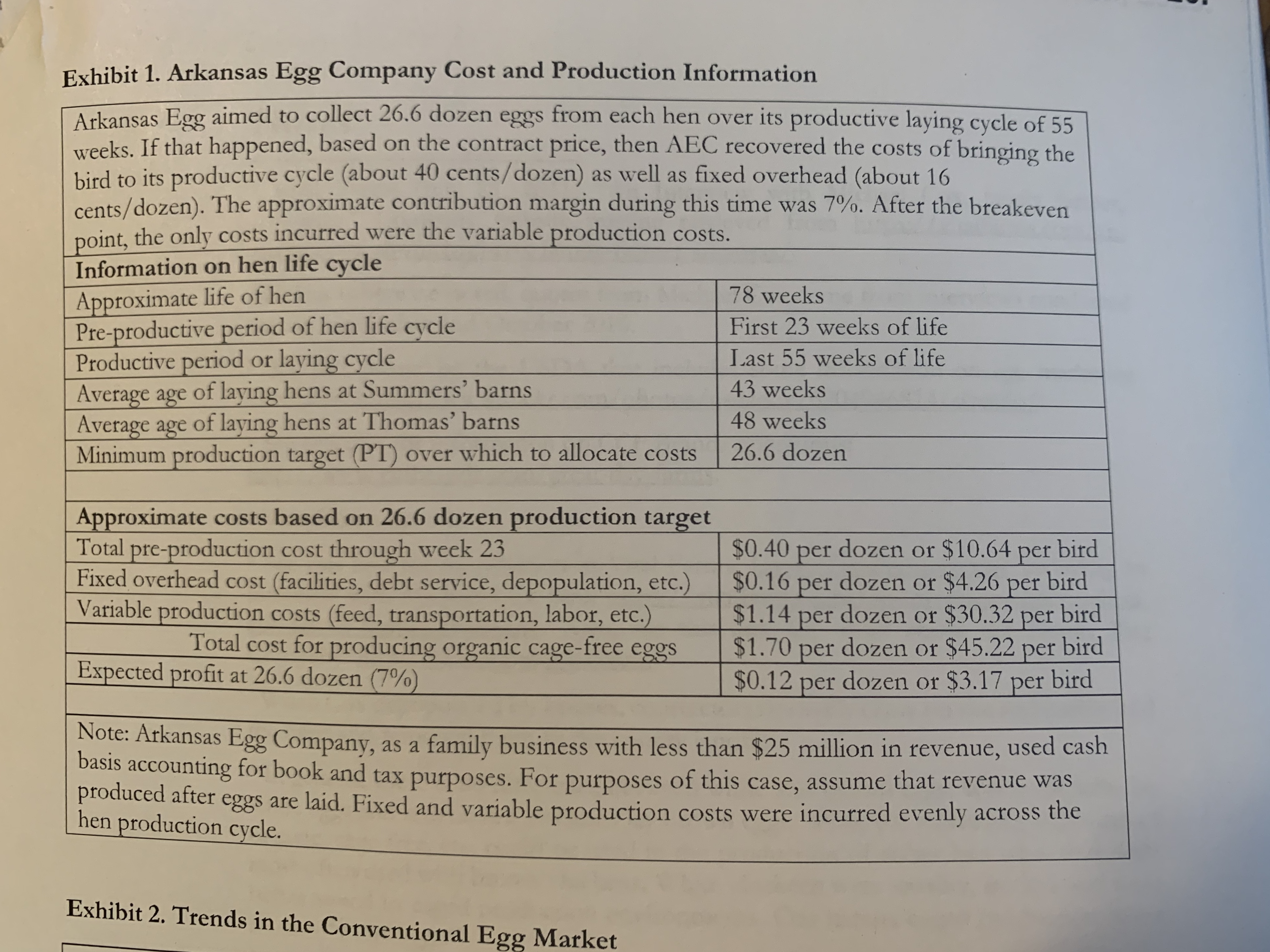Question
Taking into account the data in Exhibit 1, form a table that calculates when a hen is spent (after week 78) under normal conditions such
Taking into account the data in Exhibit 1, form a table that calculates when a hen is "spent" (after week 78) under normal conditions such as the CCF Brands contract, or that could be used to decide when it is no longer profitable to continue egg production. That is, construct a model with formulas for which you can easily vary inputs, such as price, profit, or variable costs. Use the output template provided below. (Hint: Distinguish between relevant and non-relevant costs. Determine the estimated revenue per dozen and weekly production costs first.)


Step by Step Solution
There are 3 Steps involved in it
Step: 1

Get Instant Access to Expert-Tailored Solutions
See step-by-step solutions with expert insights and AI powered tools for academic success
Step: 2

Step: 3

Ace Your Homework with AI
Get the answers you need in no time with our AI-driven, step-by-step assistance
Get Started


